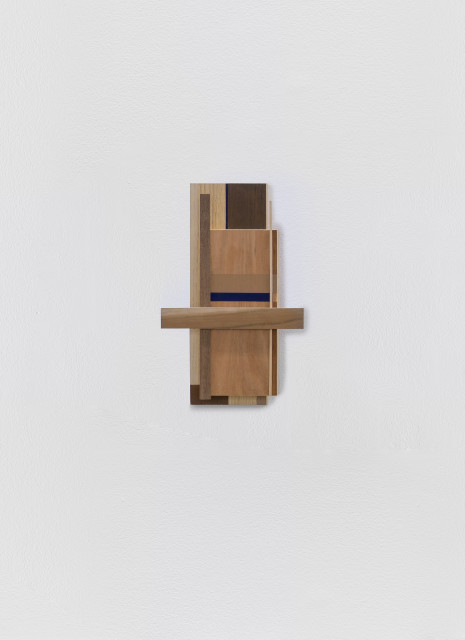In 2014 three scientists shared a Nobel Prize for discovering an “inner GPS” in brains. Their work showed that “place cells” create our internal maps, while “grid cells” generate co-ordinate systems that allow us to find our way in the world. It has since been shown that stories and ideas are coded by those place cells, while the grid cells map our temporal, social and conceptual relations. Thought arises from space, from location. Who we are is because of where we are—and where we’ve come from.
Grids. Identity. Systems. Stories. These are the centers of gravity in the debut solo show of Sarah Almehairi. Born in Abu Dhabi, her work is not just about what it means to be carving out an identity in a hyper-global world – it isher identity, readable along the walls like the lines of a poem. Photographs, maps, and obscured memories from a summer visit to a town in the north-east of Tennessee tied up in her family’s history form the basis of her investigations.
There is an ostensible division in the body of work: the narrative-figurative pieces on one side, the abstract-geometric on the other. But there is, for Almehairi, no chasm or barrier between these two ways of perceiving and representing. “It is interesting to have multiple subjects and modes at play with each other,” she says. “It’s a balancing act, like identity. It is when narrative and abstract are intertwined that playfulness, attentiveness and exploration rise.”
Look at the geometric abstractions of the Building Blocks series (2018-19), and think about that title. Mondrian’s Le Néoplasticisme and De Stijl architecture come to mind, but these are woodshop scraps, not platonic, Judd-perfect blocks. Those painted brown, navy, and fluorescent orange lines as intimate as diary entries.
Look at the large paintings, and Map Systems (2019) (and think about that title): we see blueberries and blue skies, fireflies and water towers, but they’re enclosed, coded, systematized. Reduced, like the typologies of water and gas towers in the Bechers’ photo series, to shape and line, angle and design—memory itself.
Look at Patterns We Use, Memories I Have (2019). The warp and weft of the embroidery fabric provide strict co-ordinates for the stitches (that seem to create cross sections of the component parts of Building Blocks). But Almehairi’s handwork has pulled the grid to new dimensions. Einstein’s spectacularly unregimented space-time field, rather than Newton’s classical model of the universe. (And think about that title).
Look at the series Contained Gestures (2019). Those found, earthenware bowls are a pre-made system, both absolute constraint and infinite opportunity. And think about that title.
Think about all the titles, all the ways in which Almehairi uses language, because she is also a poet, using the written word as both research model and raw material. “X marks the spot to a / home I’ve never known” she writes in one sequence.
Her biggest influence though is Agnes Martin. Like Martin, Almehairi’s grids and geometries are anything but cold; her muted palettes nothing but fizzing with life. That fascination with language, with the tangled tapestry of story-thought, is everywhere.
Art critic and theorist Rosalind E. Krauss wrote that grids in modern art were “will to silence, its hostility to literature, to narrative, to discourse…” She was wrong. Martin showed us, over the many decades of her work. Almehairi will show us too. Will show for many decades to come.
If this is a first line or opening stanza of a poem, what follows could be epic. Enough to silence us all.
— Martin Jackson, July 2019

